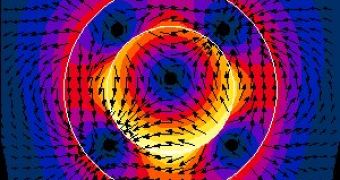A new research has just proven the existence of a completely new type of electron wave on metal surfaces. Called the "acoustic surface plasmon," it will have profound implications in the fundamental understanding of chemical reactions on various surfaces.
Bogdan Diaconescu and Karsten Pohl of the University of New Hampshire, US, led the research that finally proved the existence of this new plasmon, which could find many applications in the future development of nano-optics, high-temperature superconductors and many more.
Plasmons have been regarded as a viable means of transmitting information on computer chips, due to the fact that they can support much higher frequencies (into the 100 THz range, while conventional wires become very lossy in the tens of GHz).
"The existence of this wave means that the electrons on the surfaces of copper, iron, beryllium and other metals behave like water on a lake's surface," says Diaconescu. "When a stone is thrown into a lake, waves spread radially in all directions. A similar wave can be created by the electrons on a metal surface when they are disturbed, for instance, by light."
Though theorized for many years by various scientists and even dismissed as "impossible to exist" only last year, this is the first time a researcher actually proves the existence of these acoustic surface plasmons using experimental methods.
"Just one year ago, another group of scientists concluded that these waves do not exist," says Karsten Pohl, associate professor of physics at UNH. "These researchers have probably not been able to find the acoustic plasmon because the experiments require extreme precision and great patience. One attempt after the other did not show anything if, for example, the surface was not prepared well enough or the detectors were not adjusted precisely enough."
Due to the vital role plasmons play in chemical reactions on metal surfaces, the new find could greatly influence many industrial areas, from nano-microscopy and optical signal processing to industrial catalysts that could clean the exhausts of cars around the world.

 14 DAY TRIAL //
14 DAY TRIAL //